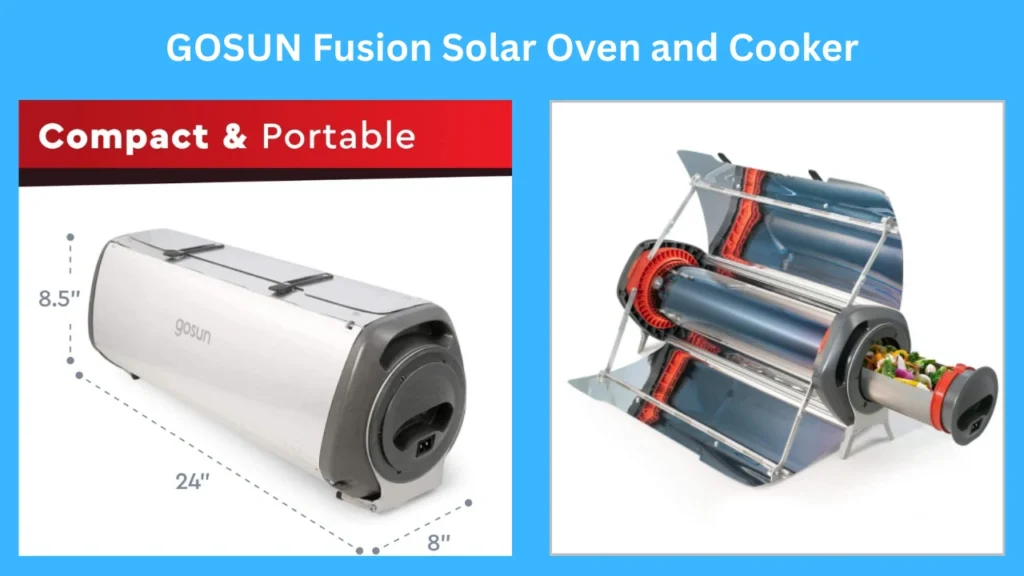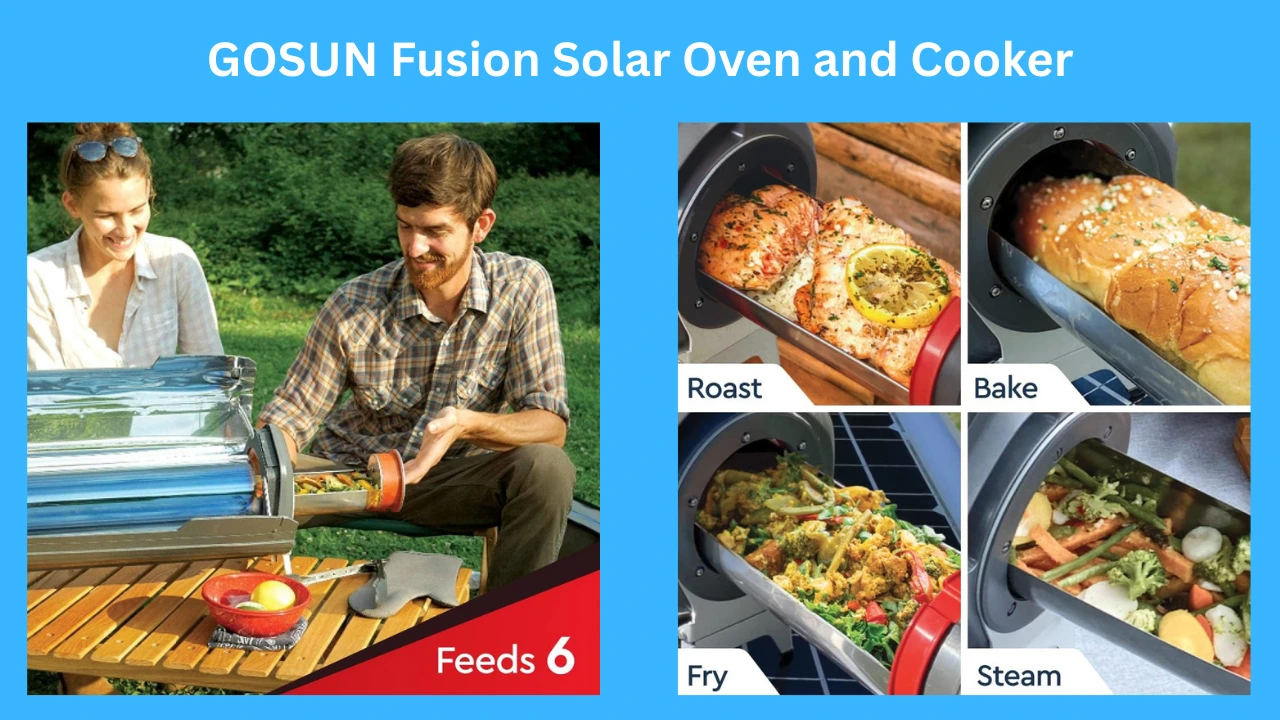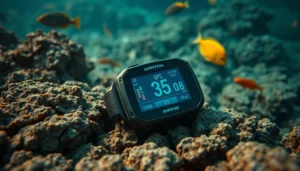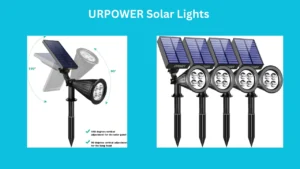Introduction
The GOSUN Fusion Solar Oven and Cooker presents itself as a versatile, hybrid cooking appliance that bridges solar cooking technology and modern electric convenience. Marketed as the “GOSUN Fusion Solar Oven and Cooker | Hybrid Electric Grill | Portable & High Capacity | Indoor or Outdoor Solar Cooker | American Oven Camping Cookware | Survival Gear Powered by Sun or Electricity,” the device targets a broad set of users: campers, van-lifers, outdoor enthusiasts, emergency preppers, and homeowners seeking energy-efficient alternatives. This review evaluates the unit’s design, functionality, performance, portability, safety, and overall value, while placing it in the context of existing solar and hybrid cooking solutions.
Product Overview
The GOSUN Fusion combines two primary modes of operation:
- Solar-powered cooking using a parabolic or reflective collector that concentrates sunlight to produce heat.
- Electric hybrid mode allowing the device to operate as a grill/oven when sunlight is unavailable or insufficient.
Key selling points promoted by the manufacturer include:
- Portability and relative light weight for camp/overland travel.
- High-capacity interior designed to accommodate family-sized meals.
- Dual indoor/outdoor use enabling versatility across environments.
- Durable construction meant for rugged use and long-term reliability.
- Capability to serve as survival gear due to independence from grid power when using solar energy.
This review examines how well these claims hold up during realistic use and long-term considerations.
Design and Build Quality
Form Factor and Materials
The Fusion’s design emphasizes ruggedness and practicality. The shell typically combines high-temperature-resistant materials, stainless steel cooking surfaces, and tempered glazing where applicable. The overall construction aims to balance thermal insulation with ease of cleaning and durability against outdoor elements.
- Strengths: Robust chassis, corrosion-resistant metals, sealed joints and latches for transport, thoughtfully placed handles and feet for stability.
- Considerations: Reflectors and concentrator components may require careful alignment and occasional cleaning to maintain efficiency. Some users might find the finish prone to superficial scuffs during heavy outdoor use.
Capacity and Configuration
The interior is advertised as “high capacity,” often designed to fit multiple portions—roasts, several trays of vegetables, or multi-serving casseroles. Shelving and tray options increase flexibility for different cooking methods (baking, roasting, grilling).
- Strengths: Practical layout for family-style meals, removable trays for cleaning, modular inserts for grill vs. oven configuration.
- Considerations: Although large for a portable cooker, it remains smaller than a conventional home oven; portion planning is still necessary for larger groups.
Performance

Solar Mode
The core appeal of the Fusion is solar cooking. Performance in this mode depends on several variables: sun intensity, angle of incidence, ambient temperature, and reflectivity of collector surfaces.
- Efficiency: On bright, direct-sun days the cooker can reach temperatures sufficient for baking, roasting, and grilling. Typical peak temperatures often range from moderate to high heat (enough for slow roasting to good searing depending on conditions).
- Consistency: Solar-only performance is inherently variable. The device performs best in clear, sunny climates and declines in overcast or high-latitude conditions.
- Cooking Profiles: Ideal use-cases include slow-roasted meats, baked goods, dehydrating, and steam-based preparations. Quick high-heat tasks (e.g., fast searing) are more challenging without electric assistance or concentrated sun.
Electric/Hybrid Mode
The hybrid aspect mitigates solar variability by providing electric heating elements or an integrated electric grill option.
- Strengths: Reliable temperature control, predictable cooking times, and ability to cook indoors or at night. The electric mode broadens usability and makes the device more practical as an everyday appliance.
- Power Requirements: Depending on the electrical design, it can often run from standard AC outlets or be paired with portable battery systems/solar panels for off-grid electric cooking.
- Thermal Performance: Electric heating delivers consistent heat distribution; combined with insulation and design, it enables conventional oven-style results.
Combined Use and Versatility
A significant advantage of the Fusion is the ability to combine solar and electric inputs. For example, preheating with sun and finishing with electric heat reduces grid energy usage while shortening cooking time.
- User Scenarios:
- Camping: Primarily solar use during daytime, electric where campsite power is available.
- Emergency Preparedness: Solar as primary heat source, electric as backup when power is accessible.
- Home Use: Hybrid operation for energy savings and redundancy.
Portability and Practicality
Weight and Mobility
The unit’s design intends portability: carry handles, foldable or detachable components, and a compact footprint make it suitable for overland travel, RV use, and campsite deployment.
- Strengths: Thoughtful transport features, quick setup for sunny cooking.
- Considerations: Despite being portable, it’s heavier and bulkier than simple solar ovens. Users should assess whether the size justifies the capacity for their use case.
Setup and Use Complexity
Setup involves aligning reflectors and positioning the cooker for optimal solar exposure. Electric mode generally requires a simple plug-in.
- Strengths: Intuitive controls, clear indicator lights or gauges (depending on model), and modular trays that reduce complexity of cooking multiple items.
- Considerations: Solar alignment and occasional repositioning during long cooking sessions require attention. New users may need a learning curve to optimize sun tracking and hybrid workflows.
Safety and Maintenance
Safety Features
The Fusion includes several safety-focused design elements such as insulation to keep external surfaces cooler, secure latches, and electrical safety mechanisms (fuses, grounded plugs).
- Warnings: Concentrated sunlight and hot surfaces create burn risk; caution is necessary when handling reflectors and opening the oven during or after cooking. Use of protective gloves and sunglasses is recommended during solar operation to guard against glare and heat.
Cleaning and Upkeep
Removable trays and stainless-steel interiors make cleaning manageable. Reflective surfaces must be maintained to preserve solar efficiency.
- Maintenance Tasks:
- Regular cleaning of reflectors and glazing to remove dust and residues.
- Inspection of seals and hinges for wear.
- Electrical component checks if used in electric mode frequently.
Comparative Assessment
Advantages Over Traditional Camp Cookware
- Independence from fuel: Solar operation reduces or eliminates the need for gas or charcoal.
- Energy savings and sustainability: Uses renewable solar energy, with electric backup when needed.
- Versatility: Functions as oven, grill, and cooker in one unit.
Advantages Over Simple Solar Ovens
- Higher capacity and hybrid electric backup improve consistency and expand use cases.
- Better suited to users who need guaranteed cooking outcomes (families, long trips, emergencies).
Limitations Relative to Conventional Ovens and Grills
- Solar dependence introduces variability; not a full replacement for grid-powered home ovens in all climates.
- Portability trade-offs: larger and heavier than minimalist solar cookers or portable grills.
Use Case Evaluation
- Camping and Overlanding: Strong fit for multi-day trips with sunny conditions or where vehicle power is available. The Fusion provides meal variety and reduces reliance on fuel canisters.
- Off-grid Living and Vanlife: Good option when combined with solar panels and battery storage for electric mode at night or cloudy days.
- Emergency Preparedness: Valuable as survival gear: solar independence and electric hybridization make it a resilient cooking solution.
- Home Use: Practical as a supplementary oven/grill that offers energy-saving possibilities and outdoor cooking experiences.
Environmental and Economic Considerations
- Environmental Impact: Solar cooking reduces fossil fuel consumption and greenhouse gas emissions when used in place of propane or charcoal. The production footprint of the unit is balanced by long-term reductions in fuel usage.
- Cost Effectiveness: Upfront cost may be higher than basic cookers, but savings in fuel and the multipurpose utility can offset costs over time—especially for frequent outdoor cooks or those prioritizing sustainability.
Pros and Cons Summary
- Pros:
- Hybrid operation (solar + electric) offers flexibility and reliability.
- High-capacity interior suitable for family meals.
- Portable and rugged design for outdoor use.
- Reduces dependence on fossil fuels; good for emergency preparedness.
- Versatile cooking modes (baking, roasting, grilling, dehydrating).
- Cons:
- Solar performance is weather-dependent and requires user attention to alignment.
- Larger and heavier than minimalist solar cookers; less convenient for ultralight travel.
- Initial investment may be relatively high compared to simple solar ovens or portable grills.
- Maintenance needed for reflective surfaces and seals to sustain performance.
Practical Tips for Users
- Maximize solar performance by setting up in direct sunlight, avoiding shaded areas, and reorienting the cooker with the sun’s movement.
- Use reflective surface cleaner and microfiber cloths to maintain optimal reflectivity.
- Preheat using solar energy when possible, then finish with electric heat to balance cooking time and energy use.
- For camping, secure the unit against wind and use heat-resistant gloves when adjusting or opening the cooker.
- If relying on electric mode off-grid, pair the unit with a compatible battery system and inverter sized to match the device’s power draw.
Conclusion
The GOSUN Fusion Solar Oven and Cooker occupies a compelling niche in the market by combining solar cooking technology with reliable electric backup. Its strengths lie in versatility, capacity, and sustainability—attributes that make it well-suited for campers, off-grid enthusiasts, and emergency preppers. While solar mode performance is inevitably tied to weather and geographic factors, the hybrid electric capability substantially increases the product’s practicality and consistent performance.
For prospective buyers, the decision hinges on use patterns: those seeking a robust, multi-functional cooker that can operate off-grid will find strong value in the Fusion. For ultralight backpackers or users who prioritize minimal bulk above capacity and hybrid functionality, a smaller or simpler cooker may be more appropriate. Overall, the GOSUN Fusion stands out as a thoughtfully engineered solution for modern, energy-conscious outdoor and emergency cooking needs.
Final Recommendation
- Consider the GOSUN Fusion if you want a high-capacity, portable cooking solution that reduces fuel dependence and provides predictable results via its electric backup.
- Evaluate your typical cooking environment (sun availability, portability needs, and whether you have access to vehicle or campsite power) before purchase to ensure the Fusion aligns with your priorities.
- For long-term value, pair the cooker with good maintenance practices and, if using electric off-grid, an appropriately sized solar and battery system.




